Rayon sewing thread, a synthetic fiber derived from wood pulp or cotton, has become a staple in the sewing world, prized for its unique characteristics.
This versatile thread is celebrated for its high sheen, vibrant colors, and smooth texture, making it a popular choice for various sewing projects.
From intricate embroidery and applique to quilting and decorative stitching, rayon thread adds a touch of elegance to creations. However, its sensitivity to heat and moisture requires careful consideration.
In this exploration, we delve into rayon sewing thread’s applications, benefits, and drawbacks, providing insights for sewists seeking to elevate their projects with this glossy and resilient material.

What Is Rayon Sewing Thread Used For?
Rayon sewing thread is commonly used for various sewing projects, particularly those that require a decorative touch or intricate stitching.
Here are some specific applications and projects where rayon sewing thread is commonly used:
Embroidery
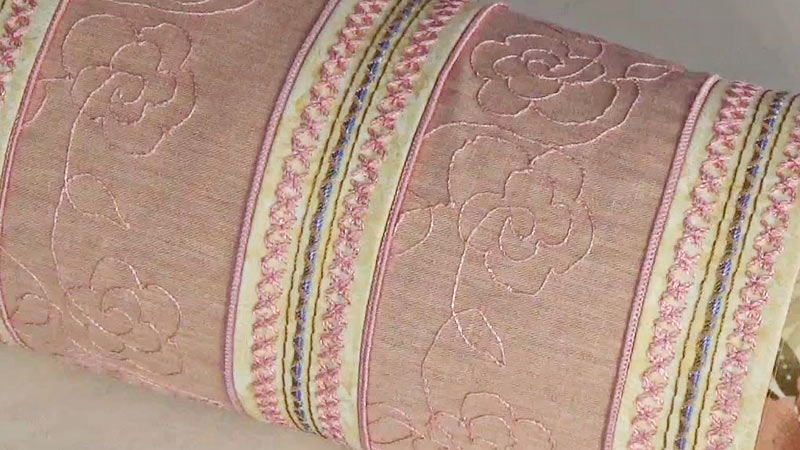
Rayon thread’s high sheen and vibrant colors make it a popular machine and hand embroidery choice. It adds a glossy finish to intricate designs and provides a luxurious look to the embroidered patterns.
Applique
When attaching applique pieces to the fabric, rayon thread can stitch around the edges or embellish the applique with decorative stitches. The thread’s luster enhances the visual appeal of the applique.
Quilting
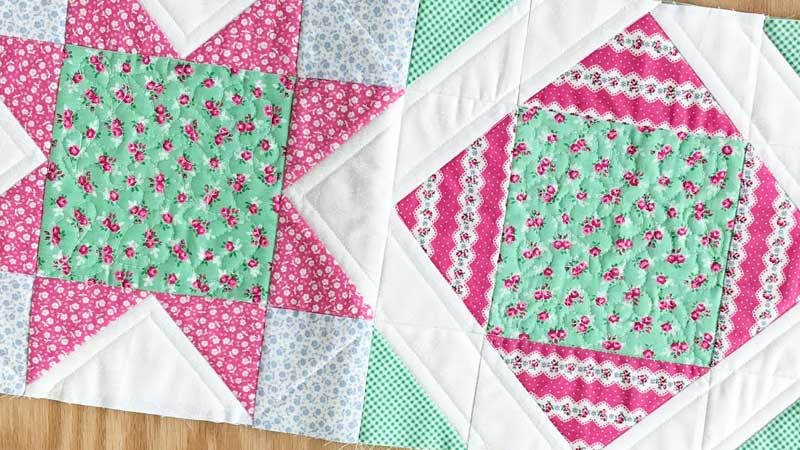
Rayon thread suits quilting projects, especially when a shiny and decorative finish is desired. It works well for machine and hand quilting, adding a touch of elegance to the quilted patterns.
Decorative Stitching
Any sewing project that involves decorative stitches, such as topstitching on garments, ornamental seams, or adding details to accessories, can benefit from rayon thread. Its sheen enhances the visibility of the stitches.
Fashion and Apparel
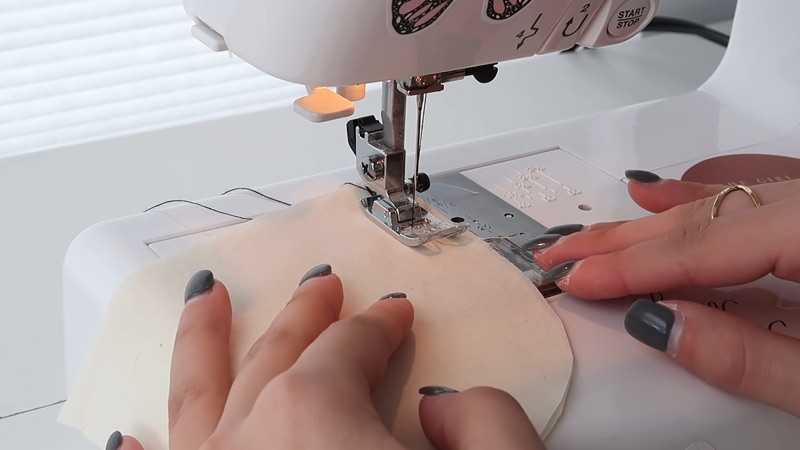
Rayon thread is commonly used in garment construction, particularly for sewing lightweight and delicate fabrics. It creates smooth and even stitches, contributing to the overall quality and appearance of the finished garment.
Home Decor Items
When creating home decor items like curtains, pillow covers, or tablecloths, rayon thread can be used for decorative stitching or embellishments. Its shiny appearance can elevate the aesthetic of these items.
Craft Projects
Rayon thread suits various craft projects, including making accessories like bags, purses, and jewelry. Its versatility in terms of color and finish allows for creative and unique crafting.
Satin Stitching
The smooth and shiny nature of rayon thread makes it an excellent choice for satin stitching. This is often used to fill in designs or create borders with a glossy finish.
Benefits of Using Rayon Sewing Thread
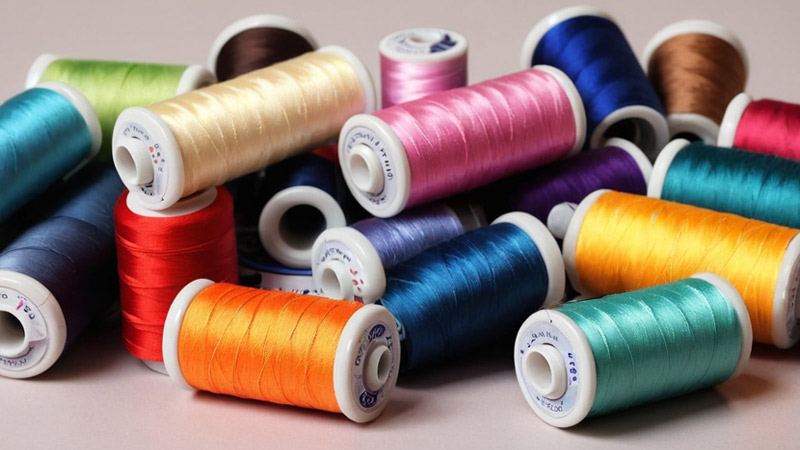
Using rayon sewing thread offers several benefits, making it a popular choice for various sewing projects. Here are some key advantages of using rayon sewing thread:
High Sheen and Color Brilliance
Rayon thread is known for its lustrous appearance and vibrant colors. It adds a beautiful sheen to stitches, enhancing the overall visual appeal of the sewn project.
Smooth and Even Stitches
Rayon thread has a smooth texture, which contributes to creating even and polished stitches. This characteristic is particularly beneficial for decorative stitching and embroidery.
Resistance to Abrasion, Mildew, and Insects
Rayon is naturally resistant to abrasion, making it durable and long-lasting. It is also less susceptible to mildew and insects, ensuring the integrity of the thread and the sewn project.
Wide Range of Colors, Weights, and Finishes
Rayon thread is available in various colors, weights, and finishes. This variety allows sewists to choose the most suitable thread for their project, providing creative flexibility.
Ease of Use
Rayon thread is generally easy to work with. It glides smoothly through the fabric, reducing the likelihood of breakage, fraying, or other sewing issues.
Compatibility with Most Sewing Machines and Needles
Rayon thread is compatible with many sewing machines and needle types. This versatility makes it convenient for sewists who use different machines or have specific needle preferences.
Versatility in Applications
Rayon thread suits various sewing applications, including embroidery, applique, quilting, decorative stitching, garment construction, and crafting. Its versatility makes it a go-to choice for many projects.
Enhanced Aesthetics in Fashion and Apparel
When used in garment construction, rayon thread adds a touch of elegance to the finished product. It complements the fabric, creating a polished and refined appearance in fashion and apparel items.
Smooth Satin Stitching
Rayon thread is often used for satin stitching due to its smooth and shiny nature. This is particularly advantageous when filling in designs or creating borders that require a glossy finish.
Durability in Finished Projects
Rayon thread’s resistance to wear and tear, along with its overall strength, contributes to the durability of the finished projects. This is essential for items that may undergo regular use or laundering.
Drawbacks of Using Rayon Sewing Thread
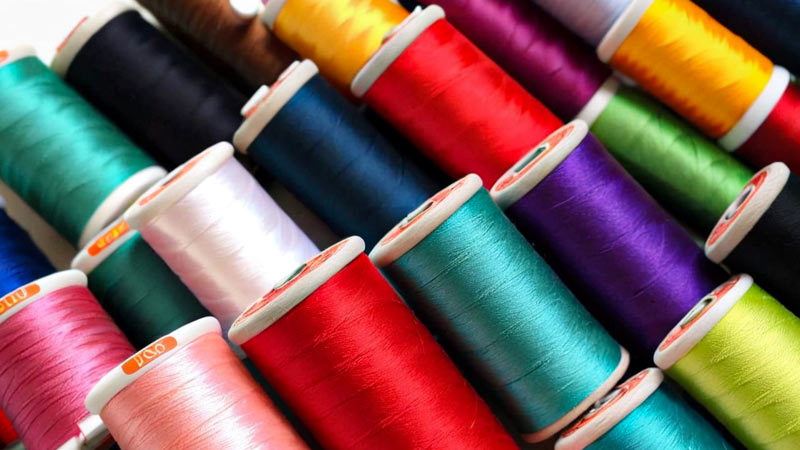
While rayon sewing thread has various benefits, some drawbacks should be considered when deciding whether to use it for a particular project.
Here are some common drawbacks of using rayon sewing thread:
Sensitivity to Heat and Moisture
Rayon thread is sensitive to both heat and moisture. High temperatures or steam exposure can cause rayon to shrink, melt, or lose its color. This sensitivity makes it less suitable for projects that involve frequent ironing or exposure to hot conditions.
Limited Elasticity
Rayon thread lacks the elasticity of other synthetic threads, such as polyester. This means it may not be the best choice for sewing projects that require a high degree of stretch or flexibility, as the thread is more prone to snapping or stretching.
Cost
Rayon thread is generally more expensive than synthetic options, such as polyester or nylon. This can increase the overall cost of a sewing project, and cost considerations may be necessary for budget-conscious sewists.
Potential for Shrinkage
When exposed to moisture, rayon has the potential to shrink. This can be a concern when sewing garments or other items subject to washing or damp conditions.
Limited Strength Compared to Polyester
While rayon is strong, it may not be as durable as polyester thread. Other synthetic threads with higher tensile strength might be preferred in heavy-duty sewing projects or items that will undergo significant wear and tear.
May Require Special Care
Due to its sensitivity, rayon thread may require special care during sewing and in the finished project. This includes adjusting sewing machine settings, using appropriate needles, and being mindful of washing and ironing conditions.
Not Ideal for All Fabrics
Rayon thread may not be the best choice for all types of fabrics. Its lack of elasticity and sensitivity to heat can affect its performance on certain materials, and careful consideration is needed to ensure compatibility.
Limited Resistance to UV Light
Rayon thread is less resistant to ultraviolet (UV) light than other synthetic threads. Prolonged exposure to sunlight may result in fading, which can impact the appearance of the sewn project over time.
Tips for Using Rayon Sewing Thread
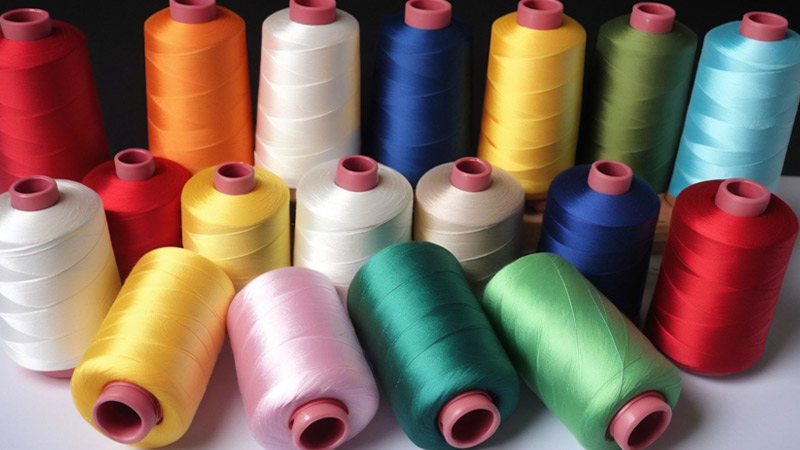
Consider the following tips to achieve the best results when using rayon sewing thread. These suggestions can help you work with rayon thread more effectively and enhance the overall quality of your sewing projects:
Choose High-Quality Rayon Thread
Opt for a reputable and high-quality rayon thread. Cheaper or lower-quality threads may have inconsistencies in thickness, knots, or slubs, which can affect the overall quality of your stitches.
Select the Right Needle
Use a sharp needle appropriate for the weight and type of fabric you are working with. A dull or incorrect needle may cause damage to the rayon thread and result in skipped stitches or puckering.
Use a Stabilizer or Interfacing
Consider using a stabilizer or interfacing when working with delicate, thin, or stretchy fabrics. This helps support the fabric and prevents it from stretching or distorting while sewing with rayon thread.
Adjust Tension and Stitch Length
Experiment with your sewing machine’s tension settings to find the right balance for rayon thread. Adjusting the tension and stitch length ensures that the thread flows smoothly and that stitches are even and well-formed.
Check Your Sewing Machine Manual
Refer to your sewing machine manual for specific recommendations or settings when using rayon thread. Different machines may have unique requirements for certain thread types.
Store Rayon Thread Properly
Store rayon thread in a cool, dry, and dark place, away from direct sunlight, heat sources, and moisture. Proper storage helps preserve the thread’s color, strength, and quality.
Thread the Machine Correctly
Ensure that the rayon thread is threaded correctly through the machine. Improper threading can lead to tension issues and may cause the thread to break or produce uneven stitches.
Consider Thread Weight
Pay attention to the weight of the rayon thread, especially when working on projects that require a specific thread thickness. The weight of the thread can impact the appearance and durability of your stitches.
Test on Scrap Fabric
Before starting your main project, test the rayon thread on a scrap fabric. This allows you to evaluate how the thread interacts with the fabric and helps you make any necessary adjustments to settings.
Be Mindful of Heat and Steam
Since rayon is sensitive to heat and moisture, be cautious when ironing. Use a low-temperature setting and avoid direct contact with the iron. Additionally, consider steam settings to prevent any damage to the thread.
Use a Thread Stand
If possible, use a thread stand when sewing with rayon thread. This helps the thread unwind smoothly and reduces the risk of tension issues.
FAQs
Can rayon sewing thread be used for outdoor projects?
While rayon thread adds a decorative touch to many projects, it may not be the best choice for outdoor items exposed to prolonged sunlight due to its limited resistance to UV light.
Is rayon thread suitable for machine embroidery?
Yes, rayon thread is widely used for machine embroidery due to its high sheen and vibrant colors, adding a luxurious finish to intricate designs.
Can rayon thread be used for heavy-duty sewing projects?
Rayon thread may not be the most suitable choice for heavy-duty projects that require high tensile strength. Other synthetic threads like polyester might be preferable for such applications.
How does rayon thread contribute to the aesthetics of quilting projects?
Rayon thread enhances the visual appeal of quilting projects by providing a glossy finish to quilted patterns, making them stand out with a touch of elegance.
Does the color of rayon sewing thread fade over time?
Prolonged exposure to sunlight may cause fading in rayon thread. Proper storage away from direct sunlight can help maintain the thread’s color over time.
To Recap
Rayon sewing thread is a compelling choice for sewists seeking to infuse their projects with sophistication and flair.
Its high sheen, vibrant colors, and versatility make it invaluable for embroidery, applique, quilting, and various decorative stitching endeavors.
While the thread’s sensitivity to heat and moisture necessitates careful handling, the benefits of enhanced aesthetics and smooth stitches outweigh the drawbacks.
By adhering to proper usage tips, selecting quality thread, and adapting techniques to its unique characteristics, sewists can unlock the full potential of rayon thread.
Ultimately, this synthetic fiber adds a touch of refinement to diverse sewing projects, creating beautiful and enduring pieces.
Leave a Reply